SSDs have become the new norm regarding storage drives these days. They have almost replaced the old hard disk drives (HDD). While the HDDs still have their use, those who have tasted SSDs can’t have enough of them. Most PCs have a single M.2 SSDs slot, which raises the question, “how to use two M.2 SSD on your PC?”
Fortunately, having two SSDs on your PC is pretty simple. If you have multiple M.2 slots on your motherboard, you can utilize them. If you do not have various M.2 slots on your motherboard, you must procure an M.2 Slot PCIe expansion card.
In the following text, I will explain in detail whether and how you can use two M.2 SSDs on your PC.
TABLE OF CONTENTS
A Refresher on M.2 SSDs
It should be noted that there are two types of M.2 SSDs:
- NVMe
- SATA
NVMe SSDs – The Golden Standard

NVMe SSDs utilize the PCIe protocol. A typical NVMe M.2 slot uses 4 x PCIe lanes, and its speed scales with the version of the PCIe protocol the M.2 slot conforms to.
So a Gen 3 (PCIe 3.0) M.2 NVMe SSD, such as the Samsung 970 Pro, can typically reach a maximum of 3500 MB/s transfer rate. A Gen 4 (PCIe 4.0) M.2 NVMe SSD, such as the Samsung 980 Pro, can compare a maximum of about 6500 MB/s.
Of course, whether your motherboard supports Gen 3 or Gen 4, SSDs depend upon your motherboard.
NVMe SSDs are generally the golden standard. These are the SSDs that most modern desktops and laptops come with. However, you should always consult with the technical specs of your laptop or desktop to confirm what PCIe version the M.2 slot(s) your PC conforms to.
Also Read: Can You Use a PCIe 4.0 SSD On Your Existing Motherboard?
SATA SSDs – The Weaker M.2 SSDs

M.2 SATA SSDs, use, well, the SATA protocol. SATA protocol is generally intended for installing slower Hard Disk Drives.
However, SATA also finds its use for SSDs. M.2 SATA SSDs run at the maximum transfer speed of the SATA protocol.
SATA 3 has a maximum theoretical transfer rate of 6 Gbps or 750 MB/s. In reality, SATA 3 M.2 SSDs run at a maximum transfer rate of 550 MB/s.
This is many folds slower the than the NVMe SSDs.
Also Read: How to Tell if My M.2 Slot is NVMe or SATA?
Differentiating Between M.2 SATA and M.2 NVMe SSDs
Both SSDs should have labels highlighting which protocol they use.
If they don’t, then you can tell by the key notches which protocol they conform to:
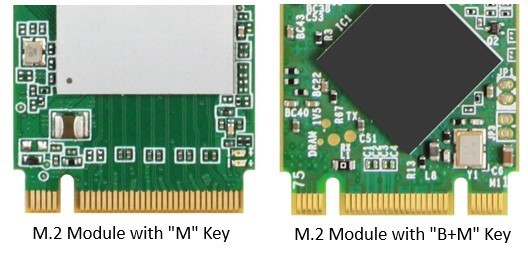
- NVMe SSDs use M Key
- SATA SSDs use B+M Key
Also Read: How to Add More M.2 SSD Slots?
So How to Use Two M.2 SSD?
Now that you understand the two protocols used for M.2 SSDs, you will be better equipped when installing two M.2 drives to your PC or when procuring an expansion.
So there are two ways to add more M.2 SSDs to Your PC:
- Use the Built-in Motherboard M.2 Slots
- Use a PCIe Expansion Card
1. Adding 2 SSDs on the Motherboard’s Built In Slots
The simplest way to add 2 M.2 SSDs is to use the M.2 slots built onto the motherboard.
Almost all newer motherboards come with two or more M.2 SSDs slots.
You can tell how many M.2 slots you have by consulting the spec sheet. Take, for instance, the MSI MEG B550 motherboard. This motherboard has a whopping 4 x M.2 SSDs slots:
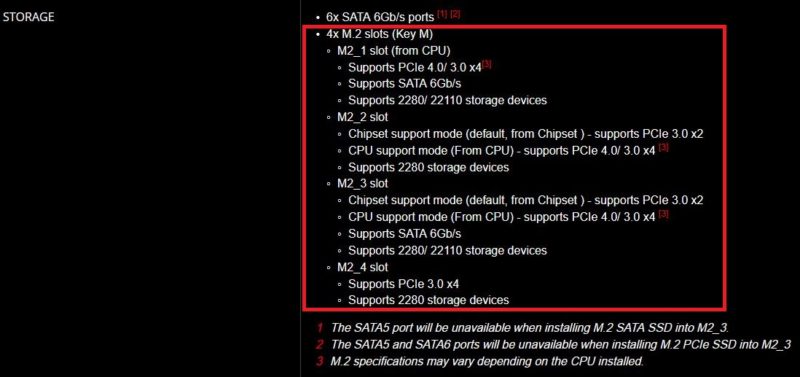
Of course, this is overkill, but most newer motherboards generally feature multiple SSDs slots.
You can read a comprehensive article here: How Many M.2 Slots Do Motherboards Have?
Beware: Not All M.2 Slots are The Same!
It would be best to note that not all M.2 slots are the same.
Recall from earlier that a typical NVMe M.2 slot uses 4 x PCIe lanes. Your SSD will need 4 x PCIe lanes to work at its highest performance level.
On some motherboards, however, the M.2 slot may only connect to 2 x PCIe lanes. Meaning the connected NVMe SSD will only perform at half its rated performance!
Take, for example, the ASUS STRIX X470-F Gaming. This motherboard offers 2 x M.2 slots but with different lane counts. The second M.2 slot only connects to 2 PCIe lanes.
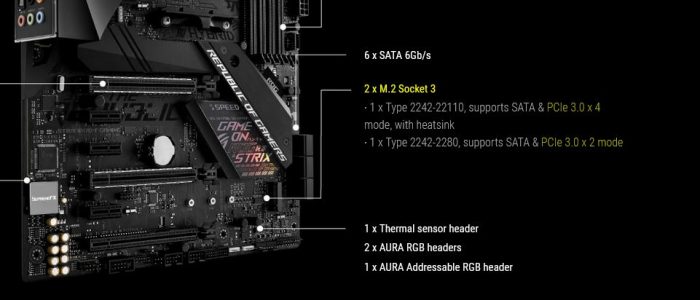
Read in Detail: How Many PCIe Lanes Does M.2 Slot?
2. Adding M.2 SSDs Using an Expansion Card
If your motherboard does not have two M.2 slots, you must procure an M.2 expansion card to add more slots.
An M.2 expansion card is a PCIe device that connects to the PCIe expansion slots on the motherboard.
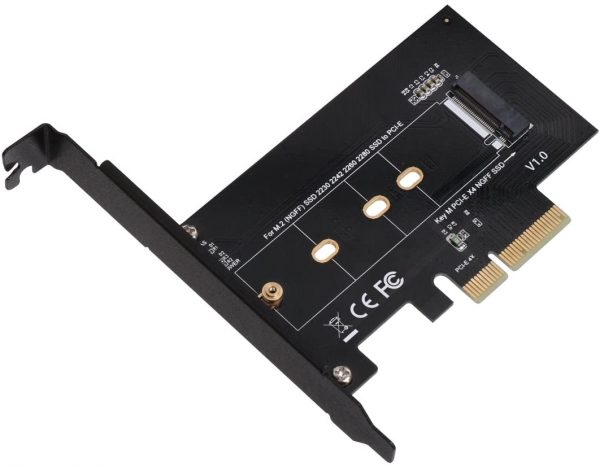
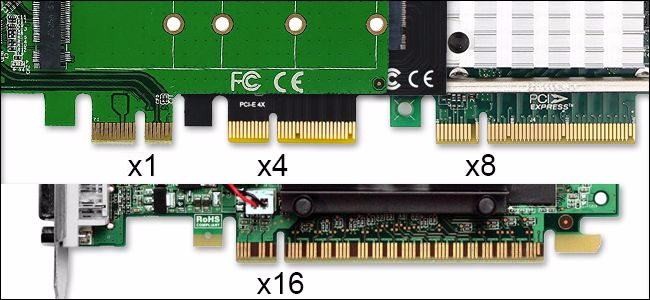
Again, you need to understand multiple caveats and specifications to buy the right M.2 PCIe expansion card.
NVMe M.2 Expansion Cards Have Different Sized Connectors
The size of the connector on an M.2 expansion card depends on how many M.2 slots it has.
Again, recall that an M.2 slot intended for an NVMe SSD requires 4 x PCIe lanes.
Hence when it comes to NVMe SSDs, the following are sizes you can find about the number of slots they have:
- 1 x M.2 NVMe SSD Slot – x4 connector
- 2 x M.2 NVMe SSD Slot – x8 connector
- 4 x M.2 NVMe SSD Slot – x16 connectors
The biggest card you can find is an x16 card with 4 x NVMe slots.
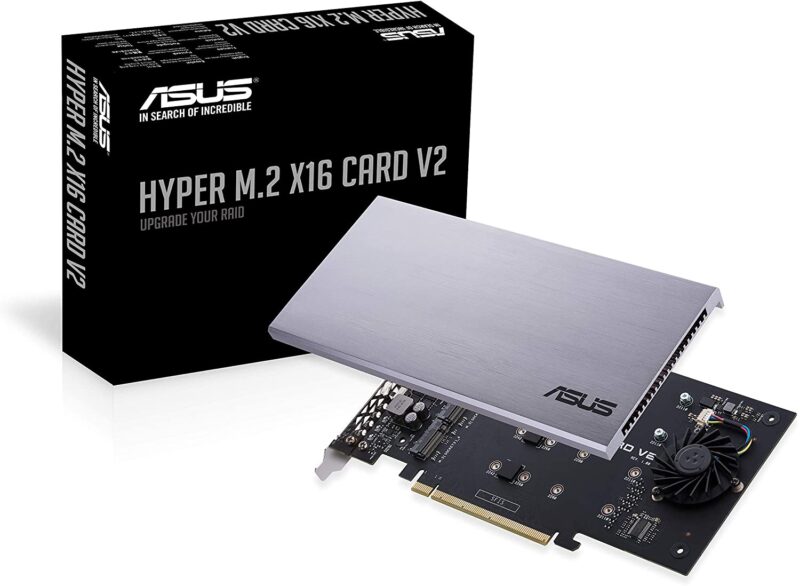
Also Read: Can You Put M.2 SSD in PCIe Slot?
SATA M.2 Expansion Cards Require Fewer PCIe Lanes
A SATA M.2 SSD does NOT require x4 PCIe lanes. Since it is a slow interface, even two PCIe lanes can suffice for one SATA M.2 Slot.
Take, for instance, the following M.2 SATA SSD expansion card. It has an x4 connector, yet offers 2 x M.2 slots.
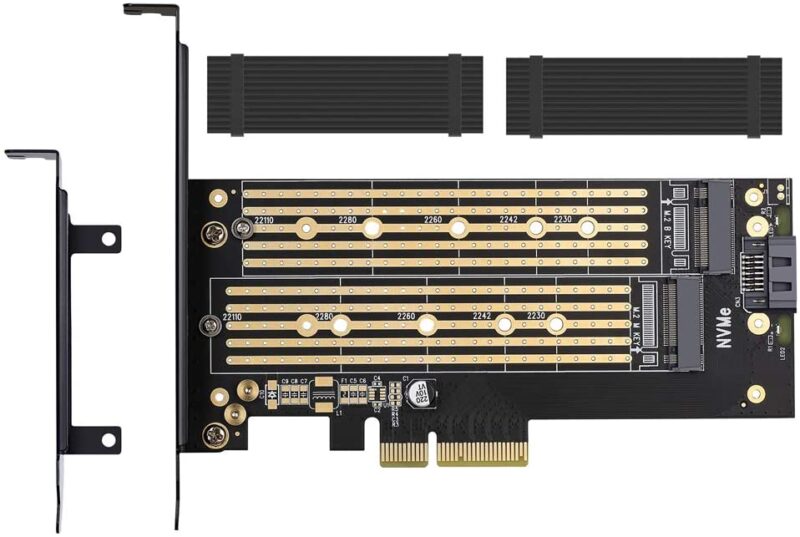
The card above can also be used for NVMe SSDs. However, an NVMe SSD installed in any of these slots would only operate at half its overall capacity – since each slot connects to only 2 lanes, and NVMe SSDs ideally require 4 each.
As such, an expansion card such as the one above is ideal for SATA SSDs but NOT for NVMe SSDs.
Also Read: Do You Need an HDD and SSD Both?
You Need to Have a Free PCIe Expansion Slot
It goes without saying that to install an M.2 expansion card, you must have a free PCIe slot on the motherboard.
So if you have an M.2 expansion card with an x4 connector, you will need an x4 PCIe slot. If you have an x16 card, you will need a slot with x16 lanes.
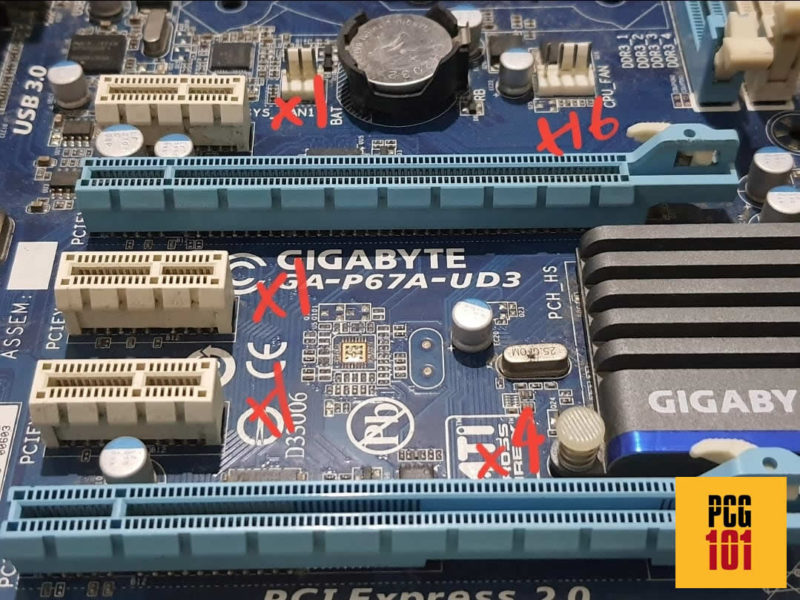
You must refer to the motherboard’s spec sheet to determine how many PCIe lanes each slot offers.
In reality, what may seem like a full x16 slot may only have x4 or x8 PCIe lanes.
Take, for instance, the motherboard above. If you install an x8 expansion card (2 x NVMe Slots) or an x16 expansion card (4 x NVMe M.2 Slots) on the bottom x16 slot, the card will naturally not work since the bottom x16 slot is only connected to 4 x PCIe lanes.
Read more about PCIe Lanes and Slots.
Final Words
I talked comprehensively about how to use two M.2 SSDs here. First, you must understand a bit about SSDs and their jargon to install and use two M.2 SSDs.
One of the first steps in using 2 x M.2 SSDs is to read your motherboard spec sheet. Among many other things, the motherboard spec sheet can tell you:
- How many slots does M.2 have
- Which PCIe version do the M.2 slots conform to
- Whether they support NVMe, SATA, or Both SSDs
- How many lanes a slot connects
- Whether the slot shares its lanes with another PCIe slot.
FREQUENTLY ASKED QUESTIONS
1. Can I use two NVMe SSDs at the same time?
Yes, most motherboards with two or more M.2 slots can support two NVMe SSDs simultaneously.
2. Can I use two SATA M.2 SSDs at the same time?
Yes, most motherboards with two or more M.2 slots can support two SATA M.2 SSDs simultaneously.
3. Can I use an NVMe SSD and a SATA SSD together?
Yes, most motherboards with two or more M.2 slots can support both NVMe and SATA M.2 SSDs at the same time.
4. How do I install two M.2 SSDs on my motherboard?
First, locate the M.2 slots on your motherboard and remove any covers or thermal shields. Next, insert the M.2 SSDs into the slots, making sure they are properly aligned and secured. Finally, replace any covers or thermal shields and connect any necessary cables.
5. How do I configure two M.2 SSDs for RAID?
To configure two M.2 SSDs for RAID, enter your motherboard’s BIOS settings and navigate to the storage configuration menu.
From there, select the RAID mode you want to use (e.g. RAID 0, RAID 1), and then select the M.2 SSDs you want to include in the RAID array.
Save your changes and exit the BIOS, then follow the prompts to install your operating system on the RAID array.

Hi, I am glad that I clicked into this website by chance when searching information for upgrading memory in desktop. The educational articles are really helpful to me who is totally a newbie in such area as I have never paid attention to the computer components and their specification before until recently I decided to get a new desktop to take place of previous very very old one and here is a desktop (https://hknotebook.moss.com.hk/ns/store/M_HKU2022_LE/generic/en_US/itf/detail/27810/IdeaCentre%20Gaming5%20-i7-) in my wishlist. If my understanding is correct, one more 16GB ram stick with same frequency as the inserted one is required to enable the dual channel. I also noticed that there are extra M.2 slots so maybe one more SSD can be added but I don’t know what the storage size of SSD should be put. Is it again a 1TB SSD, same as the inserted one or others. Any other constraints on adding a SSD? Do I need to add it when the desktop have not used or I can add it into later? Also, the PCIe version of chosen SSD should be aware of, however, this intel cpu i7-12700F stated the it supports both PCIe5.0 4.0. What if the already inserted one is just PCIe4.0? Moreover, I would like to know whether the job of adding a SSD is difficult or just like adding the ram, only need to put it into the right position. Last, I don’t quite understand why is there a free M.2 slot for WLAN while it seems there is already a wifi 6 provided. For the remaining free slots, I am not that care about it since I am just a normal user. I think I don’t need a video capturing card or raid card mentioned in the articles.
Very well explained. Thank you